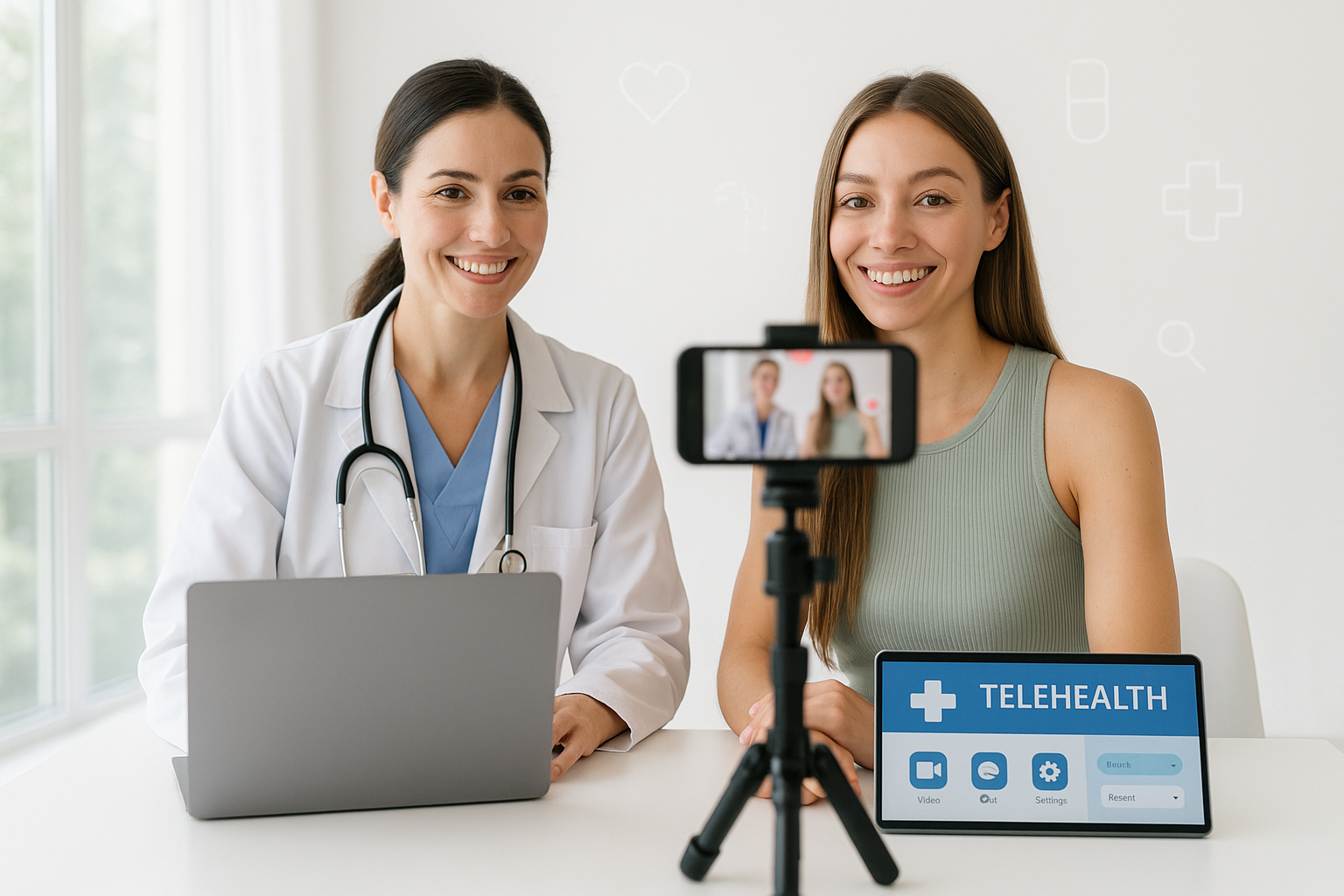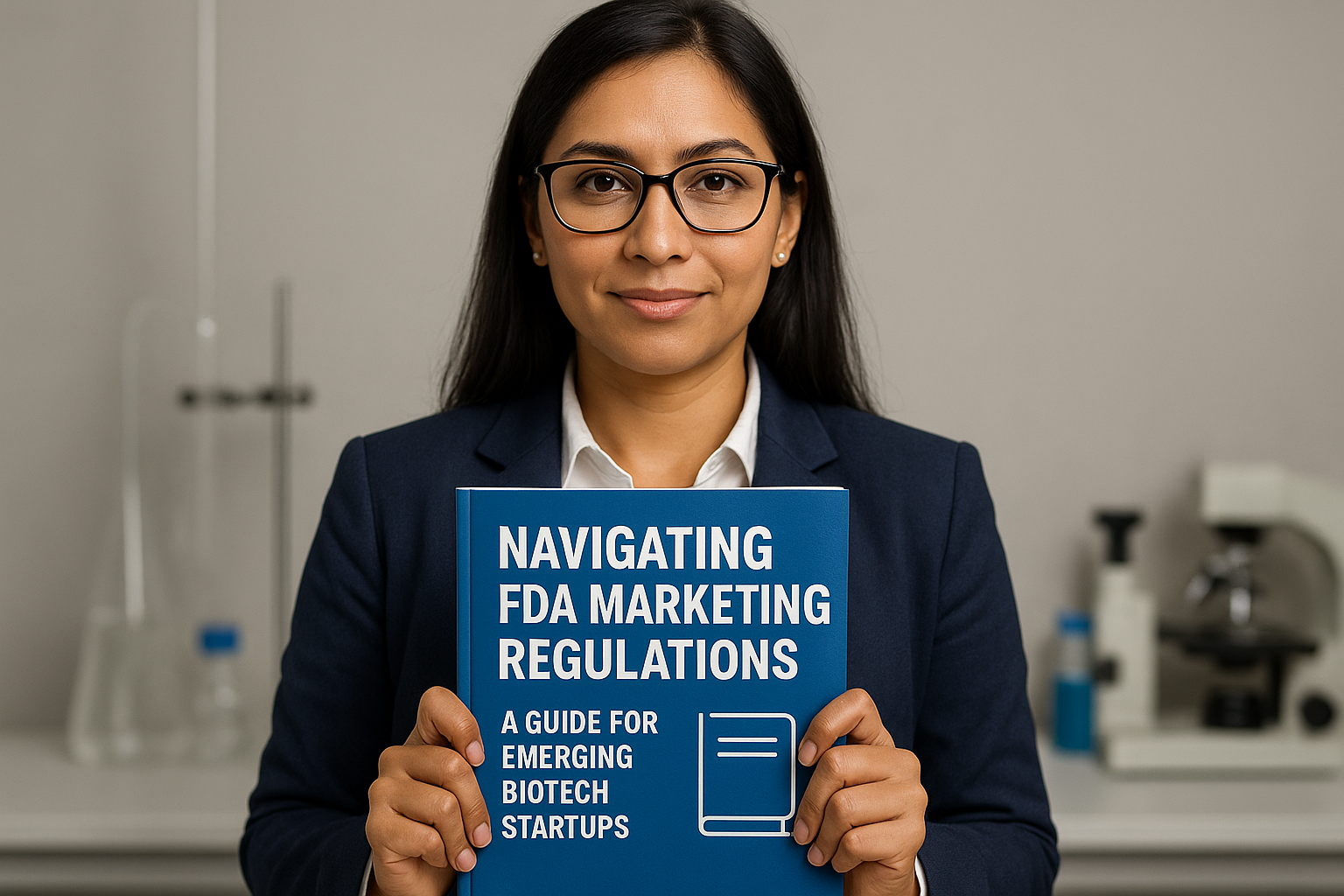A Nobel laureate shares groundbreaking research findings on Twitter. A postdoc discovers a perfect reagent for her experiment through a LinkedIn discussion. A pharmaceutical company’s Instagram post explaining mRNA technology reaches millions. A biotech startup lands a major partnership through connections made on ResearchGate.
These aren’t hypothetical scenarios—they’re happening every day. Social media has evolved from a consumer marketing curiosity into a critical channel for scientific communication, collaboration, and commerce in life sciences.
Yet many life sciences companies approach social media with skepticism or trepidation. How do you maintain scientific rigor in 280-character tweets? Can you really discuss complex molecular biology on Instagram? Will serious scientists take you seriously if you’re posting on TikTok?
The answer is yes—if you understand your audience, respect the science, and approach social media strategically rather than superficially.
Scientific audiences on social media aren’t looking for memes and viral moments. They want rigorous data, intellectual discourse, breakthrough discoveries, and genuine expertise. They’re skeptical of hype, intolerant of inaccuracy, and quick to call out oversimplification or misrepresentation.
But when done right, social media allows life sciences companies to build credibility, establish thought leadership, engage in scientific dialogue, recruit talent, attract partnerships, and amplify research impact in ways that traditional channels never could.
This guide explores how to leverage social media effectively for life sciences—building trust and credibility with audiences who value scientific integrity above all else.
Understanding the Scientific Social Media Landscape
Before developing strategy, understand what makes the life sciences social media environment unique.
Platform-Specific Scientific Communities
Different platforms serve different purposes in scientific communication:
LinkedIn: The primary professional network for life sciences. Scientists, executives, business development professionals, and investors all maintain active presence. Best for thought leadership, career content, company news, and B2B engagement.
Twitter/X: Real-time scientific discourse, conference coverage, paper discussions, and direct engagement with researchers. Despite recent platform changes, it remains influential for scientific communication, particularly for breaking research news.
ResearchGate: Dedicated academic network where researchers share publications, ask questions, and collaborate. Essential for academic engagement and researcher credibility.
Instagram: Increasingly important for science communication, particularly for reaching younger scientists, showcasing lab culture, and visual storytelling. More casual but can be scientifically substantive.
YouTube: Long-form scientific content, educational videos, mechanism animations, webinars, and conference talks. Excellent for detailed explanations that require visual demonstration.
Facebook: Declining relevance for professional scientific discourse but still useful for patient communities, disease advocacy groups, and certain demographics.
TikTok: Emerging platform for science communication, particularly effective for reaching students and early-career scientists. Requires creative adaptation of complex concepts to short format.
The Credibility Imperative
Scientific audiences are uniquely discerning. Your social media presence must demonstrate:
Scientific accuracy: Every claim must be correct, properly contextualized, and appropriately qualified. One error can permanently damage credibility.
Intellectual honesty: Acknowledge limitations, uncertainties, and alternative viewpoints. Scientists respect nuance and distrust oversimplification.
Source attribution: Cite sources, credit researchers, and link to publications. Scientists expect and demand proper attribution.
Appropriate caveats: Distinguish between preliminary findings and established facts, correlation and causation, in vitro and in vivo, investigational and approved.
Regulatory compliance: Navigate FDA regulations, SEC requirements, and platform policies while still communicating effectively.
Audience Segmentation
Life sciences social media audiences include:
Academic researchers: Seeking cutting-edge science, collaboration opportunities, technical resources, and career development.
Industry scientists: Interested in applications, products, market trends, and professional networking.
Clinicians: Looking for clinical implications, treatment updates, and patient care relevance.
Business development professionals: Monitoring partnerships, licensing opportunities, market intelligence, and competitive landscape.
Investors: Evaluating opportunities, tracking pipeline progress, assessing management, and understanding market positioning.
Patients and advocates: Seeking hope, information, community, and ways to contribute to research progress.
Students and trainees: Learning, exploring careers, seeking mentorship, and building professional networks.
Media and influencers: Finding stories, expert sources, and understanding developments.
Effective social media strategy addresses multiple audiences with appropriate content for each.
Strategy 1: LinkedIn for Professional Authority
LinkedIn is the most important social platform for B2B life sciences marketing and thought leadership.
Company Page Excellence
Your LinkedIn company page serves as your professional headquarters:
Complete profile optimization:
- Compelling “About” section explaining mission, science, and impact
- Header image showcasing research, facilities, or brand identity
- All company information complete (size, specialties, locations)
- Branded custom button (“Visit Website,” “View Pipeline,” “Join Clinical Trial”)
- Showcase pages for different business units or therapeutic areas
Content strategy:
- Post 3-5 times weekly for consistent visibility
- Mix content types: articles, images, videos, polls, documents
- Balance scientific depth with accessibility
- Share company milestones, publications, presentations, partnerships
- Employee spotlights and culture content
- Industry insights and commentary
- Educational content about science and diseases
Engagement tactics:
- Respond to all comments promptly and thoughtfully
- Ask questions to stimulate discussion
- Tag relevant individuals and organizations
- Use relevant hashtags (but don’t overdo it: 3-5 per post)
- Encourage employees to share and engage
Employee Advocacy and Thought Leadership
Your scientists and executives are your most credible voices:
Executive presence: CEOs, CSOs, and other leaders should maintain active profiles sharing insights on science, industry trends, company vision, and leadership perspectives.
Scientist profiles: Encourage researchers to share their work, comment on publications, participate in discussions, and build personal brands. Their authenticity amplifies company credibility.
Employee advocacy programs:
- Make sharing easy with suggested posts and one-click sharing
- Provide guidelines on what’s appropriate and compliant
- Recognize and celebrate active advocates
- Don’t mandate—encourage voluntary, authentic participation
Content from employees:
- Conference takeaways and insights
- Commentary on new publications in their fields
- Explanations of their research
- Mentorship and career advice
- Diversity and inclusion perspectives
- Company culture and “day in the life” content
According to LinkedIn’s research, content shared by employees receives 8x more engagement than content shared by company pages.
LinkedIn Articles and Newsletters
Long-form content demonstrates deep expertise:
LinkedIn articles: Publish 1,000-2,000 word pieces on your company page or executive profiles exploring scientific topics, industry trends, or company insights in depth.
LinkedIn newsletters: Regular newsletter series (weekly, bi-weekly, monthly) delivered directly to subscribers’ inboxes. Excellent for building ongoing audience relationships.
Topics that work:
- Deep dives into mechanisms of action
- Explanations of clinical trial design and results
- Analysis of scientific publications
- Commentary on regulatory developments
- Career advice for scientists
- Drug development processes and challenges
LinkedIn Advertising for Targeted Reach
Paid promotion amplifies organic efforts:
Sponsored content: Promote high-value posts to targeted audiences beyond your followers.
Sponsored messaging: Send direct messages to targeted prospects (use sparingly and only with genuine value).
Dynamic ads: Personalized ads using profile data.
Targeting capabilities:
- Job title and function (target specific decision-makers)
- Company name and size (account-based marketing)
- Skills and expertise (technical targeting)
- Groups and interests
- Seniority level
- Industry and company type
Campaign types for life sciences:
- Webinar promotion to researchers in specific fields
- White paper downloads targeting specific roles
- Conference presence amplification
- Thought leadership amplification
- Talent recruitment
Strategy 2: Twitter/X for Real-Time Scientific Discourse
Despite platform changes, Twitter remains central to scientific communication.
Building Scientific Credibility on Twitter
Profile optimization:
- Professional photo (individual) or clear logo (company)
- Bio clearly stating expertise, role, and focus
- Link to website or specific landing page
- Location if relevant for local engagement
Content pillars:
- Share and discuss recent publications (yours and others’)
- Live-tweet conferences and seminars
- Explain complex science in accessible threads
- Comment on breaking science news
- Share preprints and manuscripts
- Engage with scientific community discussions
- Celebrate team accomplishments and milestones
The art of the scientific thread: Threads allow detailed exploration of complex topics:
- Start with compelling hook explaining why topic matters
- Break complex ideas into digestible tweets
- Use visuals (graphs, diagrams, images) liberally
- Link to full papers or resources for deeper dives
- Engage with replies and questions
- End with key takeaways or call-to-action
Conference Engagement
Scientific conferences are Twitter’s moment to shine:
Pre-conference: Share what sessions you’re excited about, arrange meetups, preview your presentations.
During conference: Live-tweet interesting talks (with speaker permission), share photos, engage with conference hashtag, connect with attendees.
Post-conference: Share key learnings, link to presentations, thank speakers and organizers, continue conversations started at event.
Best practices:
- Use official conference hashtag
- Tag speakers and their institutions
- Share slides or figures (with permission)
- Add your own insights and context, don’t just transcribe
- Be respectful and constructive
Engaging the Scientific Community
Strategic following: Follow researchers in your field, competitors, journals, science journalists, relevant institutions, and potential partners.
Authentic engagement:
- Reply to tweets with substantive comments
- Share others’ research with context and credit
- Participate in science Twitter discussions
- Answer questions in your areas of expertise
- Acknowledge corrections or gaps in your knowledge
Handling scientific criticism: Scientists on Twitter can be direct or harsh when they spot errors:
- Respond professionally and non-defensively
- If you’re wrong, acknowledge it clearly and correct
- If it’s interpretation or nuance, explain your perspective respectfully
- Don’t engage with trolls or bad-faith actors
- Take complex disagreements offline or to more appropriate forums
Visual Content on Twitter
Infographics: Summarize complex data or mechanisms visually.
Graphs and figures: Share compelling data visualizations from publications.
GIFs and animations: Explain dynamic processes or mechanisms.
Photos: Lab work, team celebrations, conference moments, equipment.
Visual tweets receive significantly higher engagement than text-only tweets.
Strategy 3: Visual Science Communication on Instagram
Instagram’s visual focus offers unique opportunities for science communication.
Making Complex Science Instagram-Worthy
Visual content types:
Microscopy and imaging: Beautiful images from research—cells, tissues, organelles, molecular structures. Science is visually stunning when captured well.
Infographics: Simplify complex concepts into engaging visual explanations. Use carousel posts for multi-panel explainers.
Behind-the-scenes: Lab work, research processes, team collaboration, daily science life. Humanizes research.
Mechanism animations: Short animated clips showing how therapies work at molecular level.
Data visualization: Present research findings in visually compelling ways.
Team and culture: Scientists at work, celebrations, diversity and inclusion, company events.
Quote graphics: Impactful quotes from researchers, papers, or thought leaders.
Instagram Best Practices for Life Sciences
Aesthetic consistency: Develop recognizable visual style with consistent colors, filters, and design approach.
Captions that educate: Instagram captions can be lengthy—use them to provide scientific context, explain significance, tell stories, and engage audience.
Hashtag strategy: Use relevant scientific hashtags (#science, #research, #biotech, #lifesciences, plus field-specific tags).
Stories for timely content: Share conference updates, paper releases, team moments, and polls or questions in Stories.
Reels for reach: Short-form video content gets algorithmic boost. Create engaging 15-60 second educational videos.
Engagement tactics:
- Ask questions in captions
- Respond to comments thoughtfully
- Use polls and question stickers in Stories
- Host Q&A sessions
- Share user-generated content (with permission)
Balancing Accessibility with Accuracy
Instagram’s broad audience requires careful balance:
Simplified without oversimplified: Explain concepts clearly but don’t sacrifice essential accuracy. Use analogies carefully.
Visual hooks with substance: Eye-catching visuals attract attention, but captions should provide real scientific value.
Appropriate caveats: Include necessary disclaimers about preliminary findings, investigational status, or limitations.
Strategy 4: YouTube for In-Depth Education
YouTube excels for detailed scientific content requiring visual explanation.
Content Types for Life Sciences
Mechanism of action videos: Detailed animations showing how therapies or biological processes work.
Educational series: Multi-part series exploring disease biology, drug development, research techniques, or industry topics.
Webinar recordings: Repurpose webinars as on-demand YouTube content.
Conference presentations: Share talks from scientific meetings (with appropriate permissions).
Lab tours and demonstrations: Show facilities, equipment, and processes.
Researcher interviews: Feature scientists discussing their work and insights.
Technical tutorials: Detailed explanations of techniques, protocols, or analyses.
Patient stories: With appropriate permissions and compliance, share patient experiences.
YouTube Optimization
Video SEO:
- Descriptive titles with relevant keywords
- Comprehensive descriptions with timestamps, links, and resources
- Relevant tags
- Custom thumbnails that accurately represent content
- Closed captions for accessibility and SEO
- Cards and end screens directing to related content
Playlist organization: Group related videos into playlists for better discoverability and viewing sessions.
Community engagement:
- Respond to comments
- Ask questions to encourage discussion
- Create polls in community tab
- Share updates between videos
Analytics monitoring: Track watch time, audience retention, traffic sources, and demographics to refine strategy.
According to YouTube’s research, educational content has seen significant growth, with science and technology channels among the fastest-growing categories.
Strategy 5: ResearchGate and Academic Networks
For companies engaging with academic researchers, ResearchGate is essential.
Building Presence on ResearchGate
Individual researcher profiles: Encourage your scientists to maintain complete, active profiles with publications, data, and contributions.
Company profile: Create institutional profile showcasing research output, collaborations, and expertise.
Publication sharing: Make your publications accessible on ResearchGate (where copyright allows).
Question participation: Answer questions related to your expertise areas. This demonstrates knowledge and helps researchers while building credibility.
Project pages: Share information about ongoing research projects.
Data sharing: Share datasets, protocols, and supplementary materials (with appropriate IP considerations).
Engaging the Academic Community
Collaboration opportunities: Use platform to identify potential academic partners, core facilities, or collaboration opportunities.
Recruitment: Identify talented researchers for hiring or collaboration.
Intellectual exchange: Participate genuinely in scientific discussions without overtly promotional behavior.
Citation tracking: Monitor how your research is being used and cited.
Strategy 6: Content Strategy Across Platforms
Effective social media requires coordinated multi-platform strategy.
Content Planning and Calendar
Content pillars: Establish 4-6 core themes that align with business goals:
- Scientific breakthroughs and publications
- Product/platform capabilities and applications
- Thought leadership and industry insights
- Company culture and team
- Patient impact and disease education
- Partnerships and collaborations
Content calendar: Plan 2-4 weeks ahead with flexibility for timely opportunities:
- Regular weekly posts (e.g., #MechanismMonday, #FridayFigure)
- Planned campaigns around launches, conferences, publications
- Space for real-time engagement and trending topics
- Coordinated cross-platform campaigns
Platform-specific adaptation: Don’t simply cross-post. Adapt content for each platform’s format, audience, and norms:
- Same announcement: Detailed LinkedIn post, conversational Twitter thread, visual Instagram carousel, in-depth YouTube video
- Maintain consistent core message but optimize delivery
Content Creation Workflow
Roles and responsibilities:
- Scientific review: Ensure accuracy and appropriate context
- Regulatory/legal review: Verify compliance with regulations
- Content creation: Write, design, produce platform-optimized content
- Community management: Monitor, engage, respond to audience
- Analytics: Track performance and provide insights
Review and approval process: Implement efficient workflow that maintains quality and compliance without bottlenecking content flow.
Asset library: Maintain organized repository of approved images, logos, templates, and content for efficient creation.
Repurposing and Amplification
Maximize ROI by repurposing content across formats:
Publication cascade:
- Peer-reviewed paper published
- Twitter thread summarizing findings
- LinkedIn article with broader context
- Instagram infographic of key results
- YouTube video explaining implications
- Blog post for website
- Email to subscribers
- Conference presentation
Webinar repackaging:
- Live webinar
- YouTube upload with chapters
- Short clips for social media
- Quote graphics from key moments
- Blog post summarizing insights
- SlideShare presentation upload
Strategy 7: Community Management and Engagement
Social media is social—engagement is as important as content creation.
Responding to Comments and Messages
Response guidelines:
- Reply within 24 hours (sooner for questions or concerns)
- Match tone to platform and context
- Provide substantive responses, not just “Thanks!”
- Address questions thoroughly or direct to resources
- Never be defensive or argumentative
- Escalate scientific questions to appropriate experts
Handling criticism:
- Acknowledge concerns professionally
- If error, admit and correct immediately
- If disagreement about interpretation, explain perspective respectfully
- Don’t engage with trolls or bad-faith actors
- Take sensitive issues offline when appropriate
Managing controversial topics: Life sciences companies may face opposition from anti-vaccine activists, animal rights activists, or others. Prepare response protocols in advance.
Building Community
Recognition and attribution: Tag and credit other researchers, institutions, and collaborators. Scientific community values proper attribution.
User-generated content: Share (with permission) content from researchers using your products, patients benefiting from therapies, or partners collaborating with you.
Conversations, not broadcasts: Ask questions, solicit opinions, encourage discussion. Social media should be dialogue, not monologue.
Consistency: Regular presence builds community. Sporadic posting undermines credibility and engagement.
Influencer and KOL Engagement
Identifying scientific influencers: Find researchers with strong social media presence, relevant expertise, and engaged audiences.
Authentic relationships: Build genuine relationships, not transactional collaborations. Share their work, engage with their content, invite them to webinars or advisory boards.
Compliance considerations: Any financial relationships must be properly disclosed per regulations.
Amplification strategies: When influencers share your content or mention your work, amplify appropriately (reshare, thank, engage with their audiences).
Strategy 8: Measuring Social Media Success
Track metrics that matter for life sciences organizations.
Platform-Specific Metrics
Reach and awareness:
- Followers/connections growth
- Impressions and reach
- Profile views
- Share of voice in your therapeutic area
Engagement:
- Likes, comments, shares
- Engagement rate (engagement per impression)
- Click-through rate
- Video views and completion rate
- Saves and bookmarks
Quality of engagement:
- Sentiment analysis
- Quality of comments and discussions
- Engagement from target audiences (not just vanity metrics)
- Mentions from key opinion leaders
Business Impact Metrics
Lead generation:
- Inquiries from social channels
- Demo requests
- White paper downloads
- Webinar registrations from social
Partnership and BD:
- Business development inquiries
- Partnership discussions initiated
- Investor interest generated
Recruitment:
- Applications influenced by social presence
- Quality of candidates from social channels
Research impact:
- Citation increases correlated with social promotion
- Collaboration inquiries
- Media coverage amplification
Thought leadership:
- Speaking invitations
- Media requests for expert commentary
- Industry recognition and awards
Benchmarking and Competitive Analysis
Track competitors: Monitor competitor social presence, content strategies, engagement levels, and audience growth.
Industry benchmarks: Compare your performance to life sciences industry averages for context.
Identify gaps and opportunities: Where are competitors succeeding? Where are they neglecting? What whitespace can you occupy?
Navigating Regulatory Compliance on Social Media
Life sciences social media must balance engagement with regulatory requirements.
FDA Regulations for Social Media
Key considerations:
Character limitations: Platform character limits don’t exempt from required risk/benefit balance. If you can’t include appropriate context, don’t make the claim.
Off-label promotion: Don’t promote unapproved uses, even in responses to user questions.
Adverse event reporting: Social media mentions of adverse events may trigger reporting requirements.
Monitoring requirements: You may need to monitor and correct misinformation in comments or user-generated content.
Substantiation: All claims must be substantiable with data.
Resources: Review FDA’s guidance on social media for drug and device companies.
Best Practices for Compliance
Clear disclaimers: Include appropriate disclaimers on profiles and investigational therapy content.
Pre-approval required: Implement review processes for content before posting.
Platform selection: Some companies restrict platforms (e.g., no Facebook/Instagram) to maintain control.
Employee guidelines: Provide clear guidelines about what employees can and cannot say.
Monitoring and documentation: Archive social media content and interactions for regulatory documentation.
Crisis protocols: Prepare for scenarios like viral misinformation or adverse event discussions.
Conclusion: Credibility Through Authentic Scientific Engagement
Social media for life sciences isn’t about going viral or chasing likes. It’s about building trust, demonstrating expertise, contributing to scientific discourse, and creating genuine value for sophisticated audiences who can spot inauthenticity instantly.
Success requires:
Scientific rigor: Never compromise accuracy for engagement. One error destroys credibility you spent years building.
Authentic voice: Let your scientists and experts speak in their own voices. Authenticity resonates with scientific audiences.
Consistency: Regular presence and engagement build relationships and trust over time.
Platform fluency: Understand each platform’s culture, norms, and best practices. Don’t treat all channels identically.
Value creation: Every post should provide genuine value—education, insight, inspiration, or connection.
Community participation: Engage authentically with the scientific community, not just broadcasting your own content.
Long-term thinking: Social media success in life sciences accumulates over time. Be patient and persistent.
Regulatory awareness: Navigate compliance requirements thoughtfully without letting them completely constrain communication.
The life sciences companies building strongest social media presence aren’t those with the biggest budgets or most polished content. They’re those demonstrating the most genuine expertise, engaging most authentically with their communities, and consistently providing real value to their audiences.
Scientific audiences on social media are looking for intellectual stimulation, professional development, collaboration opportunities, and advancement of knowledge. Give them that, and you’ll build credibility and influence that translates into partnerships, recruitment, investment, and ultimately, greater impact for your science.
The conversation is happening. Make sure your voice is part of it.
References
- LinkedIn Business Solutions. (2024). “B2B Marketing on LinkedIn: Best Practices.” Retrieved from https://business.linkedin.com/
- YouTube Creator Academy. (2024). “Educational Content on YouTube.” Retrieved from https://www.youtube.com/
- U.S. Food and Drug Administration. (2024). “Social Media and Internet Communications Guidance.” Retrieved from https://www.fda.gov/
- Nature. (2024). “Social Media for Scientists: Best Practices and Impact.” Nature Publishing Group.
- Science Magazine. (2024). “Scientific Communication in the Digital Age.” American Association for the Advancement of Science.
- Pew Research Center. (2024). “Social Media Use Among Scientists and Researchers.” Retrieved from https://www.pewresearch.org/
- Altmetric. (2024). “Social Media Attention for Research Outputs.” Digital Science.
- ResearchGate. (2024). “Platform Statistics and Research Impact.” ResearchGate GmbH.
- Twitter/X. (2024). “Science Communication on Twitter.” Twitter, Inc.
- Hootsuite. (2024). “Social Media Trends for Healthcare and Life Sciences.” Hootsuite Inc.
- Sprout Social. (2024). “Social Media Analytics and Benchmarks.” Sprout Social, Inc.
- Content Marketing Institute. (2024). “B2B Social Media Marketing Report.” Retrieved from https://contentmarketinginstitute.com/
- Pharmaceutical Research and Manufacturers of America (PhRMA). (2024). “Social Media Guidelines.” Retrieved from https://www.phrma.org/
- Journal of Medical Internet Research. (2024). “Social Media in Healthcare Communication.” JMIR Publications.
- PLOS ONE. (2024). “Impact of Social Media on Scientific Research Dissemination.” Public Library of Science.




